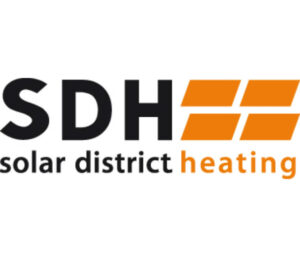SDHp2m is a H2020 European Project whose name stands for Solar District Heating (SDH) and actions from Policy to Market. The project started in January 2016 and has a duration of 36 months.

The region of Styria in Austria is one of three EU regions (together with Thuringia (DE) and Rhône-Alpes (FR)) whose regulatory regional authority is a project partner of SDHp2m. The aim of the project is to develop, improve and implement advanced policies and support measures for SDH in 9 EU regions linked to SDHp2m. Among other initiatives, the region of Styria is planning to continue the investigation grants for new district heating plants and grids, develop an additional quality criteria for applying subsidies to the construction of new heating plants and implement a new subsidy model designed for public participation.
Euroheat & Power had the opportunity to interview one of the representatives from the Provincial Government of Styria, Mr. Dieter Preiß, about the experience of this region so far as a project partner.
Mr. Preiß, for the last years, the region of Styria has actively engaged in the deployment of Solar District Heating in its territory. Why did you decide to take the initiative to become a project partner of SDHp2m?
Styria is a province of Austria which has a lot of biomass as a renewable resource. Beside an established timber and paper industry, biomass is used for supplying heat to residential buildings and production sites. Since 1986 up to now more than 500 biomass heating plants, mostly equipped with a district heating grid, have been built to use this renewable resource for green energy supply. But in Styria we have the same situation as across Europe: biomass is a limited resource.
Biomass is able to produce energy at higher temperatures that could be used in industrial processes or as a raw material for producing goods. One way to enhance the overall efficiency of district heating grids is the integration of solar heat. There are already some best practice examples of solar-assisted biomass plants that are successfully in operation for more than fifteen years. Therefore, the enhancement of this technology is a strategic option of our region for more energy efficiency and for raising the share of renewables in the heating sector.
What are the specific results you expect to achieve by implementing the advanced policies and support measures created within the project SHDp2m?
First of all, there is a need to get more focus on the heating sector because heat represents nearly one half of the final energy consumption in Europe. This sector is therefore an important milestone when it comes to tackling energy efficiency measures and rising the share of renewables.
The Styrian region is not an exception. We hope that we can go one step further in the roll-out of SDH in energy supply.
Especially local operators of district heating grids at municipal level will get informed and be supported while planning new and enhancing existing grid infrastructure by the project team. Another aspect will be increasing awareness among all stakeholders on the advantages of SDH. By the way, district heating will be one important element of the energy supply in the future.
One of the objectives of the SDHp2m project is to promote awareness among regional interested parties and civil society. Was the project well received so far by regional stakeholders?
There is a general interest because district heating operators are facing a slowly raising number of renovated buildings within their district heating grids that cause an increasing share of grid losses. More grid efficiency with solar heat integration is an opportunity to tackle this issue. Also the cost effectiveness is a point of interest. The first discussion with the stakeholder advisory group raised questions concerning legal obligations and guidelines and their adaption and possibilities for additional subsidy schemes.
Mr. Preiß, thank you very much for taking the time to reply to our questions and for offering us such enlightening explanations.
On behalf of Euroheat & Power, we wish you all success in your efforts to contribute to a more efficient and cleaner European energy system in the framework of SDHp2m.
More information about the project can be found here.

The SDHp2m project has received funding from the European Union’s Horizon 2020 research and innovation programme under grant agreement No 691624.